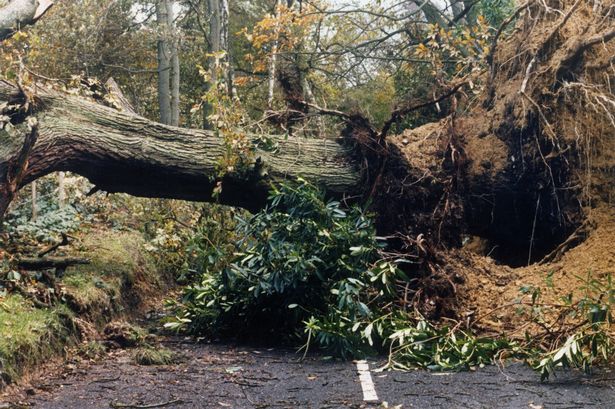October 2017 marks the 30th anniversary of the storm when hurricane-force winds felled an estimated 15 million trees across southern England. Including hundreds of mature trees on the Commons which had been damaged or felled during the night of 15th-16th October. Most trees were still virtually in full leaf and therefore much more vulnerable to wind damage than leafless trees would have been.
The storm was a tragedy for the ancient trees of Kew Gardens and the grounds of the stately homes of Kent and Sussex, but in the main no great ecological damage was done. The storm was a natural event and had the effect of culling weak and senescent trees, as well as – through the sheer strength of the wind – toppling perfectly healthy, mature trees, including ancient oaks which had stood for hundreds of years. In the immediate aftermath, the Commons keepers spent the first two days cutting and clearing fallen timber which was blocking roads and main footpaths (I know that because I saw them at work). Whether it was a deliberate policy decision, or merely the consequence of the pressure of work, we do not know, it is fortunate that wherever damaged or fallen trees were not hazardous or causing an obstruction, they were left. This was ecologically sound and simply mimics what happens in nature. Some fallen trees had sufficient of the root plate left intact to survive and thrive. Others died and became substrates for a range of fungi and havens for all manner of small animals.
The impact of the storm on the Commons was not studied in any quantitative way, but a study was conducted for the National Trust in part of Petts Wood which is contiguous with the southern boundary of St Pauls Cray Common and so the findings may legitimately be extrapolated to the Commons. The survey included all trees which had a girth of at least 160 mm at shoulder height. 30 per cent of such trees were unscathed or nearly so. 27 per cent had fallen, the most vulnerable species being Sweet Chestnut and Birch. Many of the Commons trees were protected by virtue of the density of the woodlands, veteran trees shielding younger and smaller ones.
We blame the storm for the density of Holly in our woodlands. Birds normally act as distribution agents for holly by eating the berries and dispersing the seeds in their droppings. The storm magnified this process enormously. The wind was strong enough (reaching over 100 miles per hour in exposed spots) to strip all the berries from the trees and carry them for considerable distances.
It was certainly a night to remember, but the holly problem apart, its long-term legacy on the Commons is slight.




Recent Comments